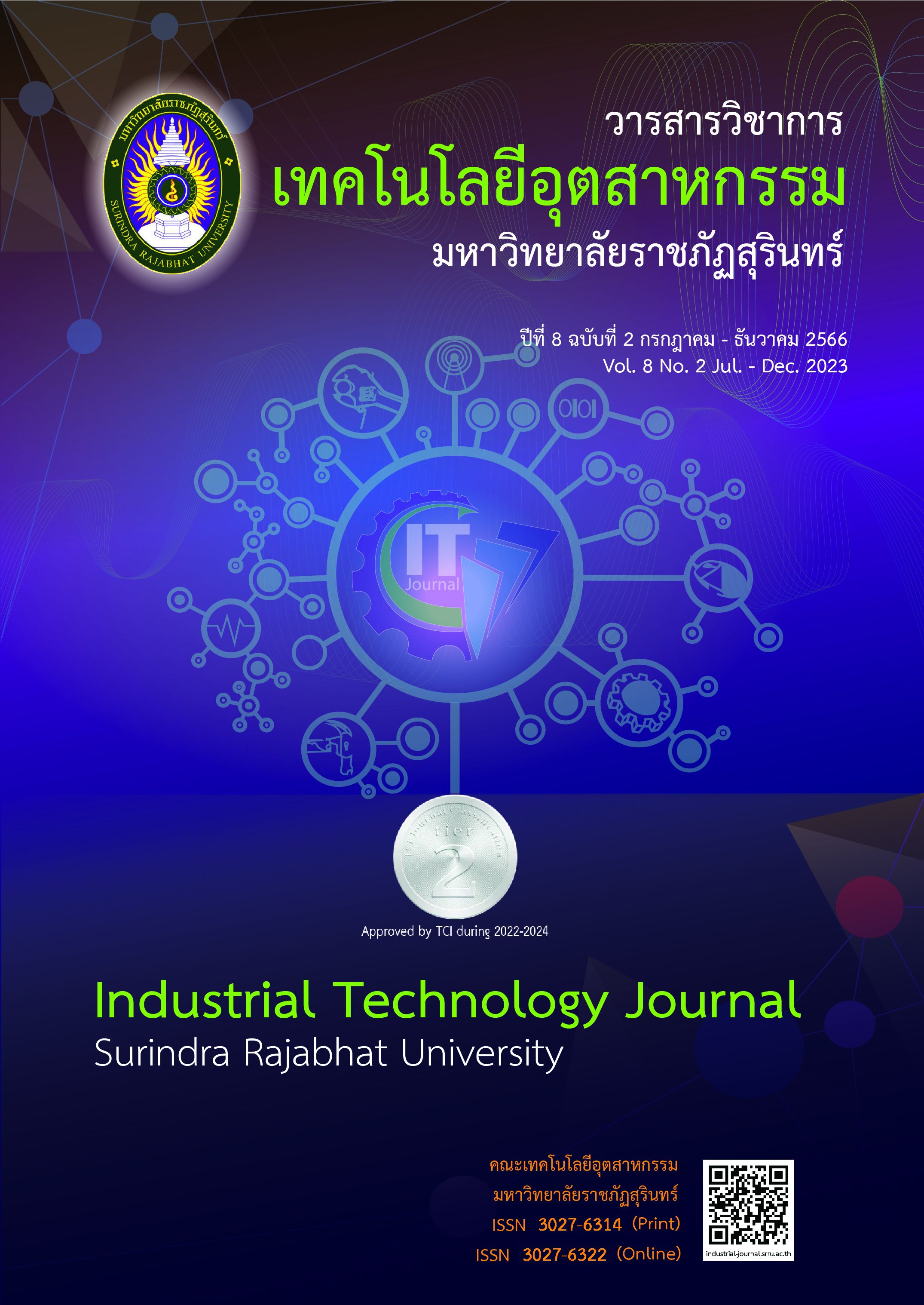การประเมินคุณสมบัติคอนกรีตผสมวัสดุเหลือใช้และความคุ้มค่าสำหรับการออกแบบเฟอร์นิเจอร์สนาม
Main Article Content
บทคัดย่อ
การวิจัยนี้ได้ศึกษาแนวทางการออกแบบและการประเมินวัสดุคอนกรีตที่เป็นมิตรต่อสิ่งแวดล้อมเพื่อนำมาใช้เป็นวัสดุหลักในการออกแบบผลิตเฟอร์นิเจอร์กลางแจ้ง โดยการผสมคอนกรีตกับเศษวัสดุเหลือใช้ประเภทขวดน้ำดื่มพลาสติกใสและโฟมแล้วนำมาทดสอบคุณสมบัติทางกล ความคุ้มค่า และการลดต้นทุนก่อนการผลิตจริง
ผู้วิจัยได้ทำการศึกษาเอกสารงานวิจัยที่เกี่ยวข้องแบ่งออกได้ดังนี้ ด้านการออกแบบเพื่อความยั่งยืน ด้านวิศวกรรม และด้านวัสดุ เพื่อนำมาวิเคราะห์คุณสมบัติคอนกรีตที่ผสมเศษวัสดุที่ใช้แล้วโดยการนำมาทดแทนมวลรวมบางส่วน ด้วยวิธีการใช้ปูนซีเมนต์ปอร์ตแลนด์ (OPC) ผสมกับเศษวัสดุเหลือใช้ในอัตราส่วนที่แตกต่างกัน 2 แบบ คือ ตัวอย่างมีค่าร้อยละ 5 และ 10 โดยสัดส่วนของมวลรวมทั้งหมด การวิเคราะห์คุณบัติทางกลในเบี้องต้นความสามารถรับกำลังอัดระหว่างคอนกรีตที่ผสมขวดน้ำพลาสติกและโฟมทดแทนมวลรวมบางส่วนในอัตราส่วนไม่เกินร้อยละ 10 โดยสัดส่วนของมวลรวมทั้งหมด
ผลการทดสอบพบว่าสัดส่วนที่เหมาะสมสามารถนำไปใช้ในการผลิตชิ้นงานต้นแบบและขึ้นรูปได้คือคอนกรีตที่ผสมพลาสติกกับโฟมร้อยละ 5 โดยสัดส่วนของมวลรวมทั้งหมดในระยะเวลาการบ่มที่ 14 และ 28 วัน เพราะมีกำลังที่มากที่สุดและค่ากำลังเสถียรที่สุด การพิจารณาค่าการรับกําลังอัดที่ทดสอบได้ให้เหมาะสมกับการรับกําลังอัดในงานออกแบบขึ้นรูปผลิตภัณฑ์เฟอร์นิเจอร์กลางแจ้งที่ไม่ต้องการแรงรับกําลังอัดสูงมาก ทำให้ต้นทุนของคอนกรีตผสมขวดน้ำพลาสติกใสและโฟมที่ใช้แล้วลดลง คิดเป็นจำนวนเงินได้ 13.71 ถึง 27.40 บาทต่อการผลิตเฟอร์นิเจอร์สนาม 1 ชุด เพิ่มมูลค่าให้กับผลิตภัณฑ์สอดคล้องกับแนวคิดด้านเศรษฐกิจหมุนเวียนและการบริหารจัดการทรัพยากรตามหลัก 5Rs ภายในองค์กรการลดการใช้ (reduce) การใช้ซ้ำ (reuse) การแปรรูปมาใช้ใหม่ (recycle) การใช้ทรัพยากรแบบหมุนเวียน (renewable) และ การปฏิเสธการใช้ (refuse) ช่วยลดมลพิษลดการเกิดของเสียในวงจรผลิตภัณฑ์และการอนุรักษ์สิ่งแวดล้อมเป็นเป้าหมายที่สำคัญในการพัฒนาประเทศอย่างยั่งยืน
Article Details
เอกสารอ้างอิง
พรปริญญา ปัญญาโกษา. 2554. ต้นทุนและผลตอบแทนของการผลิตชุดโต๊ะม้าหินอ่อนอำเภอเมืองลำพูน. (การค้นคว้าแบบอิสระบัญชีมหาบัณฑิต) มหาวิทยาลัยเชียงใหม่.
Brown, H. S., & Weaver, P. M. (2018). The social dimensions of sustainability and change in diversified farming systems. Sustainability Science, 13(2), 463-479.
Chandra, S., & Berntsson, L. (2019). Lightweight Aggregate Concrete: Science, Technology, and Applications. CRC Press.
Clark, J., Coleman, R., & Keates, S. (2019). Inclusive Design: From Theories to Practices. Routledge.
Ellen MacArthur Foundation. (2012). Towards the Circular Economy: Economic and Business Rationale for an Accelerated Transition. https://ellenmacarthurfoundation.org
Gan, S. W., Nazari, A., Leong, C. Y., Lim, S. Y., & Yap, S. P. (2020). Strength properties of lightweight foamed concrete containing polyethylene terephthalate (PET) bottles aggregate. Construction and Building Materials, 246, 118442.
Jones, D. (2020). The Economics of Waste. Routledge.
Johnson, R. (2021). Sustainable product design. In Handbook of Sustainable Engineering (pp. 175-196). Springer.
https://www.ellenmacarthurfoundation.org/assets/downloads/publications/TCE_Report-2012.pdf
Smith, A. (2019). Waste: A Philosophy of Things. Bloomsbury Publishing.
Smith, B., Johnson, C., & Williams, D. (2021). Sustainable Materials: With Both Eyes Open. UIT Cambridge.
Smith, J., Gholampour, A., & Mahmud, M. A. P. (2020). The Effects of Replacing Sand with Used Plastic in Concrete. Environmental Processes, 7(4), 1117-1130.
World Health Organization. (2020). COVID-19: Operational Guidance for Maintaining Essential Health Services during an Outbreak. https://www.who.int/emergencies/disease-outbreak-news/item/2020-DON229


